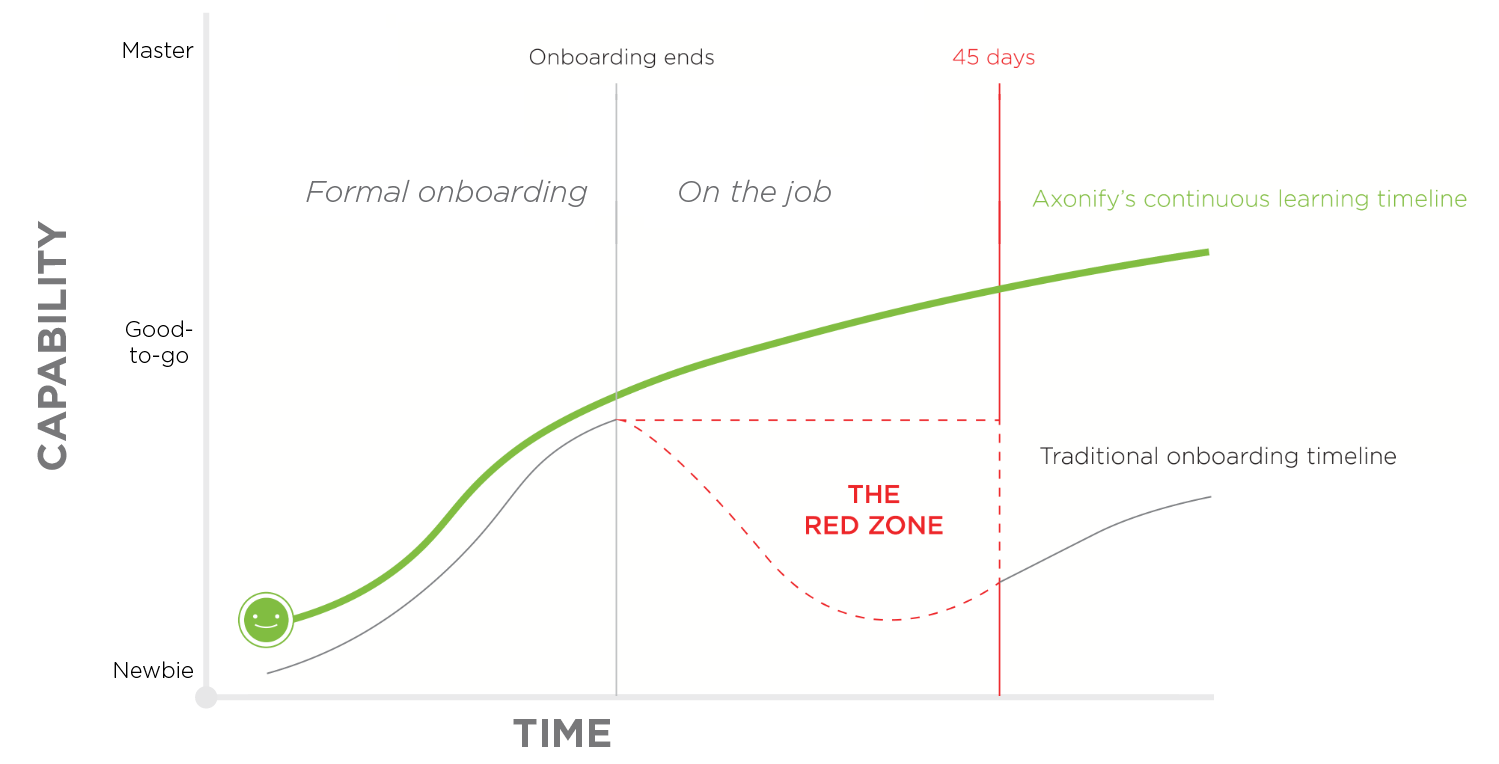How Continuous Onboarding Can Help Reduce Employee Turnover
Did you know that 20% of all employee turnover happens within the first 45 days of employment? That gives you a little over a month to make an impact on new hires, and this starts with your onboarding process.
But onboarding doesn’t start and end with new hires. Onboarding should also include employees that have longer tenure by addressing their learning and development needs—also known as continuous onboarding. Turnover is a huge problem in such a tight labor market, yet 94% of employees would stay longer at a company if it invested in their careers.
With the right software, thorough planning, and by embedding development plans into continuous onboarding programs, companies can help reduce employee turnover by keeping their staff engaged.
What is continuous onboarding?
Continuous onboarding is the practice of sustaining the onboarding experience for employees throughout their entire employee lifecycle. It’s the idea that rather than limiting the onboarding process to an employee’s first three months, there should be no time limit on an employee’s onboarding. Effectively, it means that if an employee stays at a company for ten years, their learning, development, and growth is embedded into their career path.
Onboarding is broadly associated with being a process for new hires only—orienting them with their job roles, company culture, and knocking out a lot of paperwork. Often, companies view it as a formality rather than a chance to show employees that they’re offering them a career instead of just a job.
Having a continuous onboarding strategy means that you’re committed to showing your employees, both old and new, that you’re invested in their career through developing a personal and ongoing onboarding path for each of them.
Read more: 10 Onboarding Best Practices to Turn New Hires Into Lasting Employees
How to reduce employee turnover with continuous onboarding programs
The first thing to remember is that each onboarding path should look different for new hires, for existing employees, and those moving to promoted positions. Continuous onboarding doesn’t mean ‘refreshing’ existing employees’ knowledge of your code of conduct or internal policies—it means developing the right progression and skills path for each one.
A survey conducted by SilkRoad revealed that 70% of HR decision-makers said that their employee onboarding program lasted only three months or less. But this program length serves no one—not only does it imply that there’s a time limit on integration, but that there’s a time limit on learning and career development. Almost 70% of employees are more likely to stay in the same company for three years if they experienced a great onboarding experience.
For employers wondering how to reduce employee turnover, the following steps on how to implement continuous onboarding programs will be a huge help:
Continuous onboarding for new hires and existing employees
Plan out at least the first year of the employee’s onboarding. This doesn’t mean that you need to have the details of every single milestone planned out in meticulous detail, but it does mean you should have a standard framework/template to guide this process. For existing employees, this means you’ll need to go over what they’ve already accomplished. For new hires, this assures them that you’re invested in their development from day one.
Make it personal. Sit down with your employee and go over their current onboarding plan. Ask them what a progression plan looks like to them, what kind of growth opportunities they want, and identify some key milestones. This helps the employee shape their own path, and spells out exactly what both sides need to fulfill.
Facilitate the plan you’ve put together. Depending on the employee’s onboarding path, you’ll need to put together a plan for what resources you’ll need, what departments should be involved/notified, and go over your existing learning materials to see what needs to be modified.
Remember: An employee’s development plan should never be prescribed to them. While you should always keep your business goals in mind, if you’re wondering how to reduce employee turnover, remember that it also involves helping them to develop skills to embellish their career beyond your company.
How you can support continuous onboarding with data
Continuous onboarding is synonymous with a continued learning experience for employees. Managers should be responsible for engaging employees with continuous onboarding programs, but with so many direct reports, they can become challenging to maintain, adapt, and monitor. That’s where data can help support and drive the agility of continuous onboarding efforts.
Monitoring shifts in knowledge, skills, and engagement is core to helping reduce employee turnover. Data collected in learning management systems and onboarding platforms can help managers better plan for each employee’s personal onboarding path over time.


Axonify‘s continuous learning timeline helps employers measure onboarding efforts over time (Source)
For example, Axonify can help plot an employee’s continuous learning timeline to ensure that the onboarding experience truly is continuous, by measuring each employee’s learning tasks. This platform helps monitor what each employee already knows, what they don’t know, and how proficient they are in applying this knowledge to their role. It can then populate the learning gaps to suggest what’s next for each employee.
This data can help managers prioritize their employees by analyzing who has the most immediate need for further onboarding, and can help structure the unique engagement needed for each employee.
Next steps: Reduce turnover rate with continuous onboarding programs
There’s no one answer to reducing turnover, but a well-thought out continuous onboarding plan is one of them. There’s a large disconnect between what employees want and what employers are providing them with—over 80% of employees want lifelong learning, but 40% of those say that their employers aren’t providing opportunities to upskill.
This tells us that there’s an opportunity here for companies who want to prevent their best employees being swayed by their competitors—by showing that they’re committed to their growth and mapping out this progression.
Want to know more about how software can support your continuous onboarding and turnover reduction strategies? Give us a call now on (844) 675-2849. Our expert HR software advisors offer a free 15-minute phone consultation to give you a full assessment and product recommendations for your unique business needs.